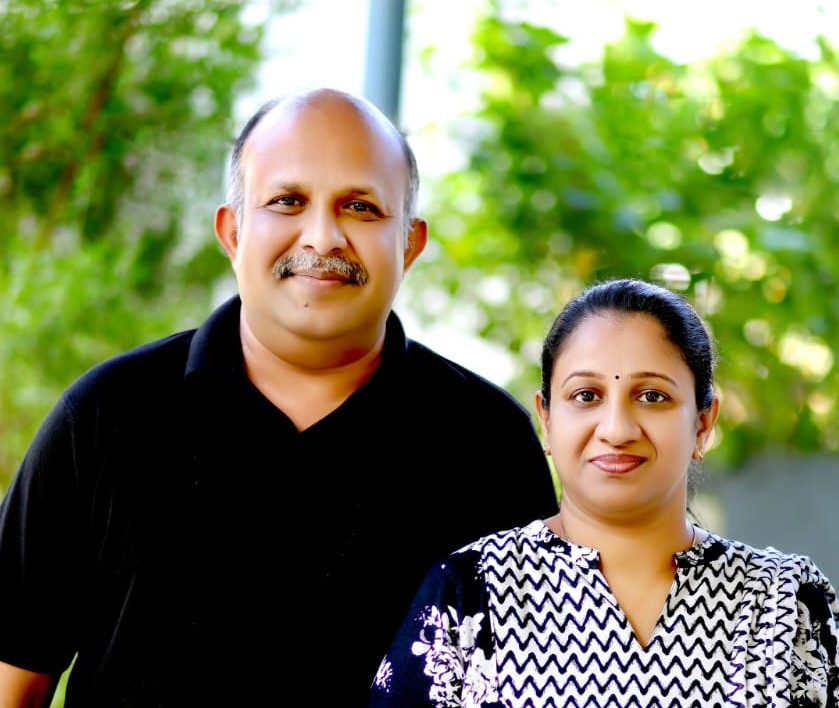Discovering Shambala—A Journey to a Sustainable Sanctuary with TGG
What if there was a place where humanity and nature danced in perfect harmony? A sanctuary where sustainable living isn’t just a dream but a vibrant reality? Welcome to Project Shambala, a visionary quest by the TGG to find and create places rooted in sustainable development. In August 2024, Laiju and Namitha, the heart behind TGG Foundation, embarked on a soul-led journey from Wayanad, India, to Nepal, guided by a calling to uncover Shambala—a beacon of hope for eco-conscious travelers and spiritual seekers. Join us as we trace their path, explore the essence of Shambala, and invite you to be part of this transformative mission through Journey with TGG.

In July 2024, they began planning, driven by a vision to create a model village where organic farming, community empowerment, and mindful living thrive.
Their journey started on August 13, 2024, from Wayanad to Kollam, balancing family time with their quest. Despite challenges like a canceled family trip due to a loved one’s cataract surgery, their resolve grew stronger. By September 2, they set off from Kollam, traveling by train to Angamali, then flying from Kochi to Varanasi via Bangalore. In Varanasi, they soaked in the sacred energy of Kashi Vishwanath Temple, Assi Ghat, and Sarnath, preparing their hearts for the next leg: Nepal.
Lumbini- The birth place of Buddha

The homestay owner in Lumbini, a warm soul, helped with currency exchange and local SIM cards, easing their transition. Lumbini, a beautiful plain at the foothills of the Himalayas, offers stunning views of the surrounding hills and mountains. It is renowned as the birthplace of Buddha, with the Maya Devi Temple marking the exact spot. When Laiju shared the Shambala vision—finding a village ripe for sustainable transformation—the homestay owner pointed them to Palpa district administration for guidance.
A Village Comes to Life: The Shambala Survey
In Nepal, Laiju’s vision took shape through action. A retired economics professor, their homestay host in Tansen, connected them with an academician associated with Millennium Secondary School. Inspired by the Shambala mission, he rallied 10 students for a village survey—a critical step to identify a community ready for sustainable growth. Laiju prepared a detailed report format, guiding the students on its significance. For many, it was their first hands-on project, and their excitement was palpable.
The next day, these young ambassadors trekked two hours from Tansen to a nearby village, surveying over 35 households. The community welcomed them with breakfast, lunch, and entertainment, blending work with joy. The village shone as a candidate for Shambala, blending rare qualities: a willingness to embrace change, a rich cultural tapestry, and a landscape primed for organic farming and eco-tourism. This moment marked a milestone—proof that Shambala wasn’t just a dream but a tangible possibility.

Challenges as Opportunities: The Heart of Shambala
No journey is without hurdles, and Laiju and Namitha faced their share. Accessing bank accounts proved tough—OTPs didn’t arrive, and Laiju’s card wasn’t activated for international payments. Namitha’s Google Pay worked sporadically, but their son, Nigil, stepped in, wiring funds to keep the mission alive. The homestay owner’s cash advance via Fone Pay was a lifeline, proving that community support fuels dreams like Shambala.
Each obstacle became a lesson in resilience. An early morning walk with the professor at 5:30 a.m.—unusual for Laiju—sparked fresh perspectives on rural economies. These moments reinforced TGG’s ethos: sustainable development thrives on collaboration, adaptability, and heart. As Laiju noted, “Driven by our strong determination to find Shambala, every challenge became an opportunity.”
What Makes Shambala Special?
Project Shambala isn’t just about a place; it’s about a way of life. The TGG Family envisions a model village where:
1. Organic Farming flourishes, nurturing soil and souls.
2. Women’s Livelihoods thrive through crafts, homestays, and food production.
3. Responsible Tourism creates jobs while honoring local traditions.
4. Community Empowerment ensures equity, education, and healthcare.
This village in Nepal, scouted through student surveys, embodies these values. Its blend of natural beauty, cultural richness, and openness to change makes it a canvas for Shambala’s dream—a utopia where travelers can plant trees, learn from locals, and grow alongside nature.
Way forward: The “Path of Shambala” initiative by TGG, envisions a future rooted in conscious living, self-sufficiency, and community-driven development. It encourages individuals to embrace sustainable practices, foster inner transformation, and contribute to a harmonious coexistence with nature. The way forward involves collective efforts to build resilient communities that prioritise well-being, ecological balance, and holistic growth.


